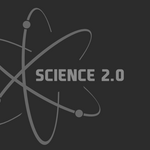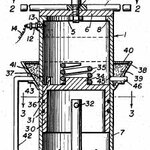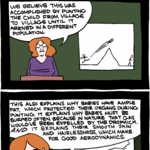Humor

Professor Shigeru Watanabe,
presently Project Leader for Keio University’s Centre for Advanced Research on Logic and Sensibility has extended the study of avian art appreciation with his participation in a project probing pictorial preferences of Padda oryzivora – a.k.a. the Java Sparrow. The birds used in the study were all complete artistic novices – enabling the following question to be experimentally tested : Do Java sparrows naturally
prefer Cubism, Impressionism or traditional Japanese-style artworks? To
find out, the experimenters constructed an extended art-gallery-like
cage…

What are the functions of smiling, specifically, the functions of smiling in relation to laughter? Dr. Markku Haakana
[pictured here, not smiling], from the Department of Finnish,
Finno-Ugrian and Scandinavian Studies, at the University of Helsinki,
Finland, explains:
“(i) Smiling can be used as a pre-laughing device:
laughing together can be entered step-wise, and smiling is a common
device for paving the way to the laughter. (ii) Smiling can be used as a
response to laughter in the previous turn.”
These smile-functions were revealed during an experimental study
which used data from…

It seems that the first US patent for an internal-combustion powered ‘Pogo’ stick was issued to inventor R.J. Mays
back in 1950. The jumping machine was intended to run on gasoline, and,
according its creator was “…highly efficient and amusing in operation.”
It’s not altogether clear whether May’s power-stick ever went into
production, but a similar(ish) device,
which was granted a US patent ten years later, did. According its
inventor Mr. G. Spitzmesser, the stick – known commercially as ‘The Hop
Rod’ was “…extremely safe and harmless and of tremendous entertainment
value.” Edwin…

The Signal Analysis and Interpretation Laboratory (SAIL)
has attempted construction of a ‘Synthetic Laughter Generator’ – which
could be of use as a responder to their ‘Automatic Sarcasm Recognizer’
previously described.The lab published a paper on the subject of Automatic acoustic synthesis of human-like laughter in the Journal of the Acoustical Society of America,
121:1(527-535) 2007. It points out that “… natural expressive speech
quality is essential for synthesizing long exchanges of human-machine
dialogs and for information relaying monologs.” Something which a
synthetic laughter…

The Signal Analysis and Interpretation Laboratory (SAIL) at the University of Southern California, US, is one of the few, perhaps the only human-centered information processing lab to have built and tested an ‘Automatic Sarcasm Recognizer’. Lab director Professor Shrikanth (Shri) S. Narayanan and colleagues started out with the premise that : “Sarcasm, also called
verbal irony, is the name given to speech bearing a semantic
interpretation exactly opposite to its literal meaning.” With that in
mind, they then focussed on 131 occurrences of the phrase “yeah right” in the ‘Switchboard’ and…

Although robotic jockeys for camel racing have been successfully
deployed for several years now, some have voiced concerns about them –
for many of the 'bots are configured to vigorously cane the competing camels.
(Hi-res photographic example here – the Swiss-made KMEL - manufactured by the K-Team Corporation
– note the robotic whipping mechanism).But now a potentially less
harmful camel jockey-bot is available. It was developed by
researcher and inventor Mohamed Shakir, formerly based at the Department of Electrical Engineering, Qatar University.
The bot still brandishes a whip, but it’s…

Famous problem, famous solution, but is that the whole story?
How would you solve the problem of crossing the seven bridges of Konigsberg?
Spiked Math proposes a number of other solutions that never made it into print.
Original cartoon can be found here - including the pop-up punchline.
Further creative solutions gratefully received.

As
some have observed, popular cinema is an influential medium that
reflects and shapes social attitudes. Bearing that in mind, how have
twentieth century North American movies portrayed accountant
stereotypes?
To find out, Tony Dimnik (Assistant Professor at the Queen’s School of Business, Queen’s University, Kingston, Ontario, Canada), and Sandra Felton
(Associate Professor of Accounting at the Department of Accounting and
Finance, Faculty of Business, Brock University, St. Catharines, Ontario,
Canada), coded 41 characteristics of 168 movie characters who portrayed
accountants in…

Despite criticism from some quarters, Neuroeconomics has now become a well-established field of academic study (with dedicated research departments at New York University, Duke University, and Claremont Graduate University). A logical extension of the field, however, remains considerably less mainstream – Neuroaccounting.
To draw attention to this shortcoming, a recent paper from Jacob G. Birnberg,
the Robert W. Murphy Jr. Professor of Management Control Systems
Emeritus at the University of Pittsburgh’s Katz Graduate School of
Business, and Ananda Ganguly,
Ph.D. the Morcos Massoud…
